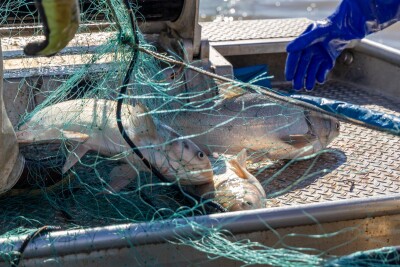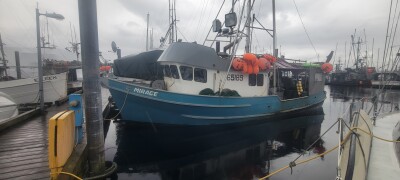Ready for the long haul
Like any magazine, National Fisherman has undergone change over its many years in print. As many of you may know, either from memory or from our "Fishing Back When" page, NF's predecessor, Maine Coast Fisherman, was provincial and folksy, with lots of recipes, reports from "clam cops," and chatty notes from sundry lighthouse keepers Down East.
It was a very different world in those pre-Magnuson days, and NF reflected it. Fishermen have always been challenged to make a living, and by the hostile element in which they worked, but in those days we were tested most by our own limitations: our capacity for hard work, our appetite for weather, our knowledge of the habitat, our ability to construct fishy gear.
So it was no surprise that some guys consistently landed more fish than others, some guys spent more time at the dock, some guys were always "stove up," and some guys "couldn't catch cold."
Through it all, we battled low prices, short weights, and capricious fish, just as fishermen do today.
There is a mythology today that in those days fish were far more abundant than they are today, and while that is often true, it is not a matter of natural law.
When I began fishing in the early 1970s, it was on a redfish boat, because no one went dragging for groundfish off Maine in the summer. We did fine on the redfish — catching them was the easy part; the problem, if you were not a company boat or did not owe the company money, was getting rid of them — but my recollection is that we didn't catch enough groundfish to eat.
Within a decade, redfishing would almost be an anachronism, yet the same places that we'd found reds 10 years earlier, places with names like Three Dory Ridge, Harvey Black's and Cashes Ledge, were now producing considerable amounts of groundfish.
Inshore, the story was the same: Guys who once fished shrimp all winter and went lobstering or took fishing parties during the summer were rigging over to catch groundfish all year long. And it's just as well, because the shrimp had all but disappeared.
More recently, cod and flounder have deserted the inshore bottom, their places taken by lobsters.
To me, these observations underline the importance of habitat. It's as if prime habitat will always find life to support, even if the species vary over time. This is consistent, if conversely so, with one of the first things a young commercial fisherman learns, which is that fish aren't everywhere.
It may surprise many of today's readers to learn National Fisherman opposed the 200-mile limit, which was part of the first Magnuson-Stevens Act, of 1976. In fairness to my predecessors here, the 200-mile limit was inevitable, I believe, so under the circumstances the magazine's position was not so much contrarian as a matter of deference to the distant-water U.S. shrimp and tuna fleets.
In any event, the objective of U.S. fishery management in this era would have been our full utilization of stocks within the exclusive economic zone as it would now be defined.
Regardless of your views on what this ultimately meant for U.S. fisheries, it was certainly good for business, as the late 1970s and 1980s saw an explosion in technology and a rapid expansion of the fleet. There is no question that by the latter half of the 1980s, many people, inside the industry and out, recognized that a phenomenon described as "too many boats chasing too few fish" was becoming fully developed.
In the 1990s, as overfishing (I use the term in its literal, not scientific sense), reached critical mass, National Fisherman began to wrestle with conservation issues, in part because they could not be ignored but also because longtime Pacific editor Brad Matsen took them to heart.
Issues of fish conservation were not resolved by the time I became editor, in 1999, but it was clear to me that fishermen were internalizing the principles of sustainability. And though we hadn't (and haven't) reached a point where we could say, "mission accomplished, the ocean's full!" I do not question our commitment, as individuals and as a matter of national policy, to rebuilding stocks.
As such, I have seen our primary challenge as one of management. Ratcheting effort down is a pretty straightforward business until you begin to wrestle with the economic consequences. So for me, the question has always been, what's our industry going to look like when we get things sorted out, and that has been reflected in National Fisherman's coverage of the issues.
The reality is we now know where we're headed and what we're going to look like — like it or not. In the last year or two we have seen among New England fishermen, arguably the last bastion of opposition to quota management, dawning realization that survival means parceling out fish to a limited number of participants.
What does this mean for National Fisherman? To me it suggests that a shift in focus is in order, away from the ongoing twists and turns of formulating management and toward long-term issues, which include nut-and-bolt matters like vessel operation, maintenance and safety as well as the over-arching themes of profitability, marketing, and most of all, sustainability, not only of fish, but of those who catch them.
Stay tuned.
– Jerry Fraser






